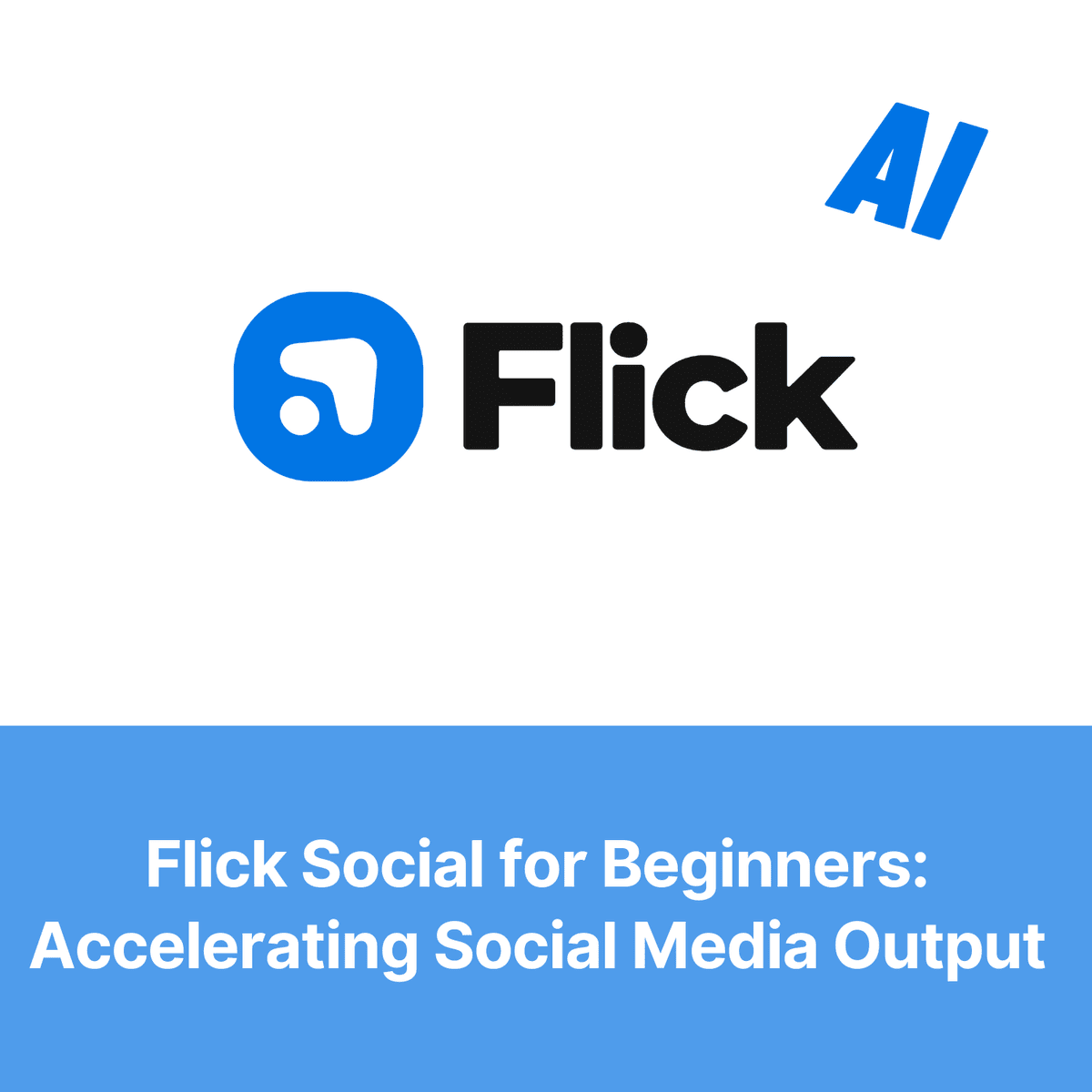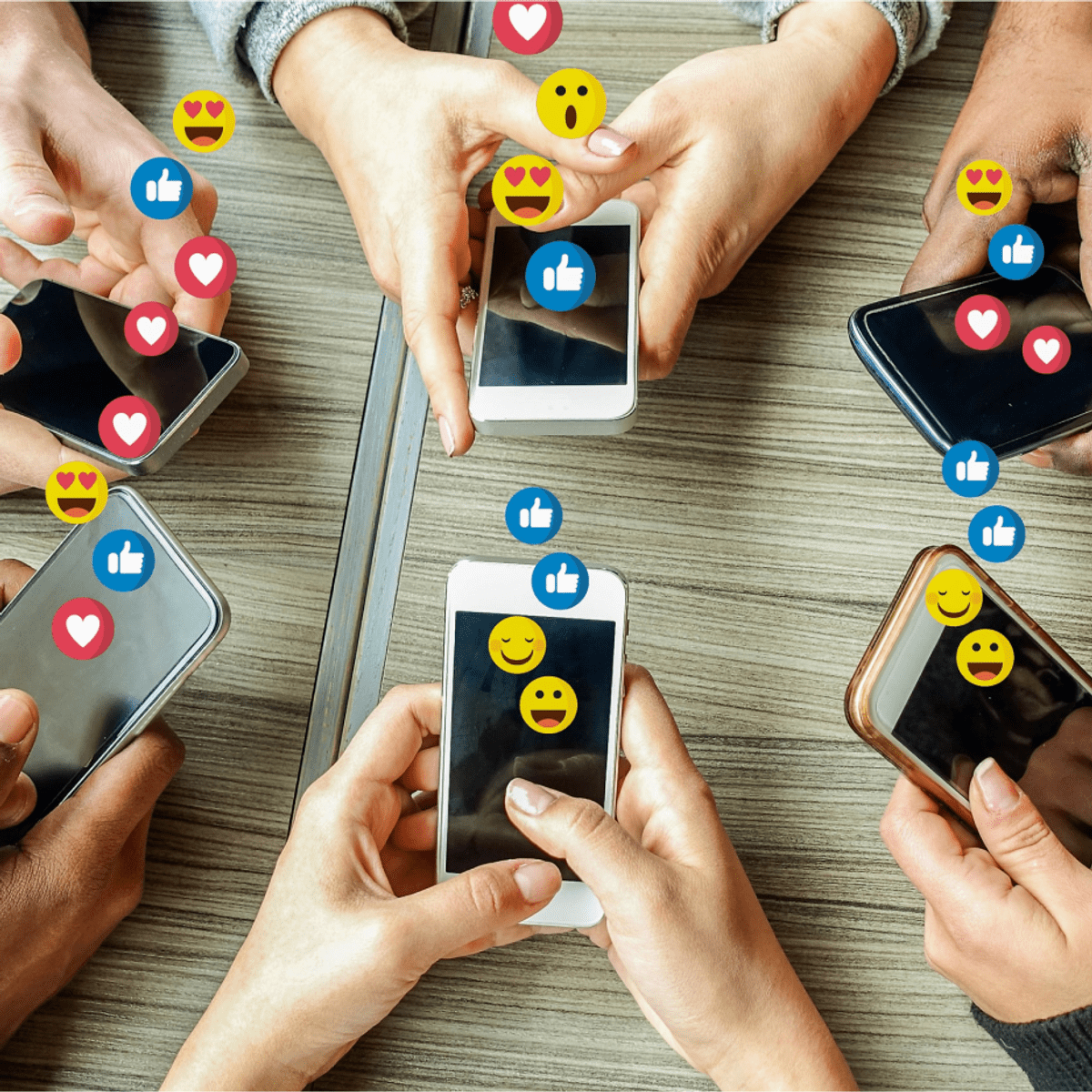Social Media Influencer
Social Media Influencer: A Career Guide
A Social Media Influencer is an individual who has established credibility in a specific industry or niche, possesses access to a large audience, and can persuade others by virtue of their authenticity and reach. [14] They create content, engage with their followers, and often partner with brands to promote products or services across platforms like Instagram, TikTok, YouTube, and others. [14, 30] This career blends creativity, marketing savvy, and personality, offering a unique path in the digital age.
Working as a Social Media Influencer can be exciting, offering opportunities for creative expression, building a community around shared interests, and potentially achieving financial independence. [29] The ability to connect directly with an audience, share passions, and collaborate with brands on engaging campaigns are aspects many find appealing. [14, 5] However, it demands consistent effort, adaptability, and a keen understanding of digital trends and audience engagement.
Introduction to Social Media Influencer
This section provides an overview of the social media influencer role, tracing its origins and defining its key characteristics within the modern media landscape.
A Brief History and Evolution
The concept of using influential figures for promotion isn't new, dating back to celebrity endorsements in traditional media. However, the rise of social media platforms democratized influence, allowing individuals to build substantial followings based on niche expertise, personality, or lifestyle content. [14] Early platforms like blogs and forums laid the groundwork, but the explosion of platforms like YouTube, Instagram, and later TikTok solidified the "influencer" as a distinct digital profession. [14, 19]
Initially, influence was often organic, stemming from genuine recommendations or expertise shared within online communities. As platforms grew, monetization opportunities emerged through advertising revenue, brand sponsorships, and affiliate marketing. [30] This professionalization led to the development of the "creator economy," a significant market involving millions of content creators globally. [7, 19] The role continues to evolve with new platforms, changing algorithms, and the introduction of technologies like AI. [8, 15]
Today, the influencer landscape is diverse, ranging from celebrities with massive reach to nano-influencers with smaller, highly engaged niche audiences. [14, 20] The focus has increasingly shifted towards authenticity and measurable results, moving beyond simple follower counts to engagement rates and conversion metrics. [14, 22] This evolution reflects a maturing industry adapting to technological advancements and changing audience expectations.
Key Activities and Responsibilities
The core activity of a Social Media Influencer is content creation. This involves developing and producing posts, videos, stories, or other media tailored to their chosen platform(s) and audience. [5] Content needs to be engaging, consistent, and authentic to maintain follower trust and interest. [14] This requires creativity, planning, and often, technical skills in filming, photography, and editing.
Audience engagement is another crucial responsibility. Influencers must interact with their followers by responding to comments, messages, and participating in discussions. [14] Building and nurturing a community is fundamental to maintaining influence and relevance. This interaction helps foster the parasocial relationships that often characterize the influencer-follower dynamic. [3, 5]
Many influencers also engage in brand partnerships. This involves collaborating with companies to promote products or services through sponsored content, affiliate links, or other arrangements. [4, 30] This requires negotiation skills, understanding contracts, and adhering to advertising disclosure regulations, such as those set by the Federal Trade Commission (FTC) in the US or similar bodies internationally. [4, 13, 27]
These courses can help aspiring influencers understand how to build a brand, engage audiences, and manage sponsorships.
Differentiation from Traditional Media Careers
Unlike traditional media figures (e.g., journalists, actors, broadcasters) whose reach is often mediated by large organizations, influencers typically build their platforms independently. [14] They cultivate direct relationships with their audience, fostering a sense of personal connection and trust that can be highly valuable for marketing. [3, 14]
The content created by influencers is often perceived as more personal and authentic compared to traditional advertising. [5, 14] While traditional media roles often involve structured hierarchies and established production processes, influencing can be more agile and self-directed, though often requiring a broader skillset encompassing creation, marketing, and business management.
Furthermore, the barrier to entry can appear lower compared to many traditional media careers, although achieving significant success requires substantial effort and skill. [7] The metrics for success also differ, often focusing on direct engagement (likes, comments, shares) and conversion rates rather than broad viewership or circulation figures. [9, 22]
Defining the Role of a Social Media Influencer
Understanding the specifics of the influencer role involves looking at their day-to-day tasks, the different types of influencers, and the personal attributes needed for success.
Core Responsibilities: Content Creation, Audience Engagement, Brand Partnerships
Content creation remains the foundation of an influencer's work. This isn't just about posting; it involves strategic planning, understanding platform algorithms, producing high-quality content (whether written, visual, or video), and maintaining a consistent schedule. [5, 8] Successful content resonates with the target audience, providing value, entertainment, or inspiration.
Audience engagement is the engine that drives influence. This means actively participating in the community, responding to feedback (both positive and negative), fostering discussions, and making followers feel seen and heard. [9, 14] Strong engagement builds loyalty and authenticity, making an influencer's recommendations more impactful.
Brand partnerships are a primary source of income for many influencers. [30] This involves identifying relevant brands, pitching collaborations or responding to offers, negotiating terms, creating sponsored content that aligns with both the influencer's and the brand's values, and ensuring proper disclosure of the partnership according to regulations like the FTC guidelines. [4, 13, 16]
Understanding monetization models is key. These courses explore different avenues, from affiliate marketing to leveraging platforms like Amazon.
Types of Influencers and Niches
Influencers are often categorized by follower count. Nano-influencers (typically 1K-10K followers) often have highly engaged, niche audiences and strong personal connections. [14, 22] Micro-influencers (10K-100K followers) balance reach with strong engagement within specific communities. [14] Macro-influencers (100K-1M followers) have broader reach, while Mega-influencers or celebrities (1M+ followers) command massive audiences, often comparable to traditional media figures. [14]
The choice of influencer type often depends on a brand's goals; nano and micro-influencers are increasingly valued for their authenticity and targeted engagement, often proving more cost-effective. [14, 22] Recent trends show a growing preference for these smaller-scale influencers. [14, 20]
Influencers typically specialize in a specific niche, such as fashion, beauty, travel, fitness, gaming, food, finance, technology, or parenting. [30] Choosing a niche allows influencers to build expertise and attract a dedicated audience interested in that specific topic. Authenticity within the chosen niche is critical for building trust and credibility. [5, 14]
These books delve into the strategies and nuances of social media marketing, applicable across various niches.
Required Traits: Creativity, Adaptability, Consistency
Creativity is essential for producing original and engaging content that stands out in crowded social media feeds. Influencers need to constantly brainstorm new ideas, experiment with formats, and develop a unique voice or style. [5] This extends beyond content to finding creative ways to engage the audience and collaborate with brands.
Adaptability is crucial in the rapidly changing digital landscape. Social media platforms constantly update algorithms, introduce new features, and shift in popularity. [18] Influencers must be willing to learn, adjust their strategies, and potentially pivot to new platforms or content types to stay relevant. Market trends and audience preferences also evolve, requiring ongoing adaptation. [2]
Consistency is key to building and maintaining an audience. Regular posting, consistent engagement, and a reliable presence help keep followers interested and algorithms happy. [8] This requires discipline, time management, and resilience, as building a successful influencer career often takes significant time and persistent effort.
Key Skills and Tools
Success as a social media influencer requires a blend of technical proficiency, strong interpersonal skills, and familiarity with various digital tools.
Technical Skills: Video Editing, SEO, Analytics Tools
Content creation often demands technical skills. Proficiency in video editing software (like Adobe Premiere Pro or Final Cut Pro, or mobile apps like CapCut) is increasingly important as video dominates many platforms. [8o7q84, llx0vr] Basic photography skills, graphic design understanding, and potentially audio editing are also valuable assets depending on the content format.
Understanding Search Engine Optimization (SEO) principles, particularly for platforms like YouTube or blogs, can significantly increase content visibility. [9h0tpm] Knowing how to research keywords, optimize titles and descriptions, and use relevant tags helps content reach a wider audience organically.
Analytics tools provided by social media platforms (like Instagram Insights, YouTube Analytics, TikTok Analytics) or third-party services are vital. [2, 9h0tpm] Influencers need to interpret data on audience demographics, engagement rates, reach, and traffic sources to understand what resonates with their audience, measure campaign success, and refine their strategies. [2, 18]
These courses focus on building technical skills relevant to content creation and platform optimization.
Proficiency with analytical tools is crucial for understanding performance. You can explore courses on specific platform analytics or general Data Science concepts on OpenCourser.
These books offer strategic insights into using social media analytics.
Soft Skills: Storytelling, Negotiation, Crisis Management
Effective storytelling is at the heart of engaging content. Influencers need to connect with their audience on an emotional level, share experiences authentically, and craft narratives that capture attention, whether promoting a product or sharing a personal update. [5, 15]
Negotiation skills are essential for managing brand partnerships. This includes understanding contracts, setting fair rates for sponsored content, defining deliverables, and managing relationships with brands or agencies professionally. [3mseoq] Being able to advocate for oneself while maintaining positive collaborations is key.
Crisis management skills are increasingly important. Public scrutiny, negative feedback, or controversies can arise quickly online. [9] Influencers need to be prepared to respond thoughtfully, manage their online reputation, and navigate challenging situations with grace and professionalism. AI tools can sometimes assist in monitoring sentiment and identifying potential issues early. [2]
Improving on-camera presence and communication is vital. This course focuses specifically on developing charisma for video content.
Essential Platforms and Tools
Familiarity with the primary social media platforms (e.g., Instagram, TikTok, YouTube, Facebook, X, Pinterest, LinkedIn) is fundamental. [30] Each platform has its own algorithms, best practices, and audience demographics, requiring tailored content strategies. Understanding trends across these platforms is crucial. [2]
Content creation tools are indispensable. Graphic design platforms like Canva are popular for creating visuals quickly. [t78js8, 8e77zn, 8ueewh] More advanced creators might use the Adobe Creative Suite (Photoshop, Illustrator, Premiere Pro, After Effects). [llx0vr, 79aatw] Scheduling tools (like Later, Buffer, or Hootsuite) help manage posting consistency across multiple platforms. [an86e6]
Other useful tools might include project management software for planning content calendars, communication tools for team collaboration (if applicable), and link-in-bio services (like Linktree or Beacons) to direct followers to multiple destinations. Staying updated on new tools, including AI-powered assistants for content generation or analytics, is also beneficial. [2, 15, 24]
These courses offer practical training in using popular tools for social media content creation and management.
Platforms and Content Strategies
Navigating the diverse landscape of social media platforms requires strategic thinking about content, monetization, and audience engagement tailored to each environment.
Algorithm Trends Across Platforms
Understanding how platform algorithms work is crucial for maximizing reach and engagement. For instance, Instagram often prioritizes Reels and consistent posting, while TikTok's algorithm is known for its ability to rapidly surface content based on user viewing patterns. YouTube rewards watch time and session duration. [22]
Algorithms constantly evolve, influenced by platform goals (like promoting new features) and user behavior. Staying informed about these changes, often through industry news or platform announcements, is necessary. Influencers need to adapt their content formats, posting times, and engagement tactics accordingly. [2]
Key trends often include a shift towards short-form video (like TikToks, Instagram Reels, YouTube Shorts), increased emphasis on authenticity and community interaction, and the integration of e-commerce features directly within platforms. AI is also playing a growing role in content recommendation and potentially content creation itself. [8, 18, 24]
Monetization Models: Affiliate Marketing, Sponsored Content
Sponsored content is a primary revenue stream, where brands pay influencers to feature their products or services. [4, 30] This can range from single posts to long-term ambassadorships. Rates vary widely based on follower count, engagement, niche, and deliverables. [17, 30]
Affiliate marketing involves promoting products using unique trackable links. Influencers earn a commission on sales generated through their links. [9jztqq, 34gn5j] This model rewards direct influence on purchasing decisions and requires building trust with the audience.
Other monetization methods include selling merchandise, offering exclusive content through subscription platforms (like Patreon or platform-specific features), creating and selling digital products (like courses or presets), earning ad revenue (especially on YouTube), or using creator funds offered by some platforms. [9h0tpm, 255p33, lj09ya] Diversifying income streams can provide more financial stability. [30]
These courses explore specific platforms and monetization avenues popular with influencers.
This book discusses strategies for social media monetization and business building.
Audience Retention Tactics and Analytics Interpretation
Retaining an audience requires consistently delivering value and fostering community. Tactics include creating interactive content (polls, Q&As), responding to comments and messages promptly, hosting live sessions, and sharing behind-the-scenes glimpses to build personal connection. [5]
Understanding audience analytics is key to retention. Tracking which content formats perform best, identifying peak engagement times, and understanding audience demographics helps tailor content to follower preferences. [2, 9h0tpm] Monitoring follower growth, churn rate, and engagement metrics provides insights into audience satisfaction.
Analyzing feedback, both quantitative (likes, shares) and qualitative (comments, messages), helps refine content strategy. Addressing audience interests, pain points, and questions directly demonstrates value and strengthens the influencer-follower bond. Consistency and perceived authenticity are vital for long-term retention. [14]
Developing skills in related areas like marketing can provide a broader strategic perspective.
Formal Education Pathways
While a formal degree is not a strict requirement to become a social media influencer, certain educational backgrounds can provide valuable foundational knowledge and skills.
Relevant Degrees: Marketing, Communications, Digital Media
Degrees in Marketing provide a strong understanding of branding, consumer behavior, market research, and advertising principles, all highly relevant to building a personal brand and managing collaborations. [br000b] Coursework often covers digital marketing strategies, campaign management, and analytics.
A degree in Communications develops skills in writing, public speaking, storytelling, media relations, and understanding different communication channels. [ofgjbn] This foundation is crucial for crafting compelling content and engaging effectively with an audience.
Digital Media programs focus specifically on creating content for online platforms, often covering video production, graphic design, web development, and social media strategy. [50fed2] These programs offer hands-on technical skills alongside theoretical knowledge about the digital landscape.
Courses like these offer foundational knowledge in digital marketing and social media strategy, complementing formal degree programs.
University Workshops on Personal Branding
Many universities now offer workshops, seminars, or even dedicated courses focused on personal branding, digital presence, and social media strategy through their career services, business schools, or communication departments. [7] These shorter programs can supplement a degree program or provide focused training.
These workshops often cover practical aspects like creating a professional online profile (e.g., on LinkedIn), developing a content strategy, understanding audience engagement, and networking effectively in digital spaces. [kfvw4v] They can be valuable for students exploring influencing or seeking to leverage social media for any career path.
Participating in such workshops provides opportunities to learn from practitioners, network with peers, and gain practical insights that might not be covered in traditional academic courses. Check your university's resources or explore online options for similar training.
This book provides practical advice on building a personal brand, akin to what might be covered in workshops.
Research Opportunities in Influencer Impact Studies
For those academically inclined, the rise of influencer culture presents rich opportunities for research. Universities are increasingly studying the social, psychological, economic, and ethical impacts of social media influencers. [3, 5, 6, 10]
Research areas might include the effects of influencer marketing on consumer behavior, the role of influencers in shaping social norms or political discourse, the psychological impact on followers (e.g., related to body image or mental health), or the ethical challenges surrounding authenticity and disclosure. [3, 5, 6, 10, 9]
Students pursuing degrees in fields like Communications, Marketing, Sociology, or Psychology may find opportunities to engage in research projects, write theses, or collaborate with faculty studying these phenomena. This can provide a deep understanding of the field, even if direct influencing isn't the ultimate career goal.
Online Learning and Self-Education
Many successful social media influencers are self-taught, leveraging online resources and practical experience to build their careers. This path requires discipline, resourcefulness, and a proactive approach to learning.
Feasibility of Self-Taught Success Stories
Numerous influencers have achieved success without formal degrees in related fields, demonstrating that a self-directed learning path is viable. [7] They often learn by doing: experimenting with content, analyzing what works, studying successful creators, and utilizing the vast amount of information available online.
Success often hinges on dedication, consistency, creativity, and the ability to connect authentically with an audience. [5] While formal education provides structure, self-learners can tailor their education to their specific niche and goals, acquiring skills as needed through online courses, tutorials, articles, and podcasts.
However, the journey requires significant self-motivation and resilience. It involves navigating platform changes, managing the business aspects (like finances and contracts), and dealing with the pressures of maintaining a public persona, often without the structured support of a traditional educational institution. [9, 10] OpenCourser's Learner's Guide offers tips on staying disciplined during self-study.
These courses cater to aspiring influencers looking to learn specific skills, such as vlogging or mastering specific platforms, often through a self-paced online format.
Balancing Free vs. Paid Resources
A wealth of free resources exists online, including tutorials on YouTube, blog posts from marketing experts, platform help centers, and podcasts discussing social media trends. These are excellent starting points for foundational knowledge and staying updated.
Paid resources, such as in-depth online courses, specialized workshops, e-books, or coaching sessions, can offer more structured learning, expert insights, and personalized feedback. [9h0tpm, 3mseoq, 8o7q84] Investing strategically in paid resources can accelerate skill development and provide access to proven strategies or frameworks.
The key is to balance these resources effectively. Start with free materials to identify knowledge gaps, then consider targeted paid resources for specific skills or deeper understanding. Evaluate the credibility and value of paid resources carefully before investing time and money. Platforms like OpenCourser help compare courses and find options that fit your budget, sometimes highlighting deals via OpenCourser Deals.
These books offer comprehensive guides, often representing a valuable investment for self-learners seeking structured knowledge.
Building Portfolios Through Personal Projects
For aspiring influencers, their own social media channels serve as their portfolio. Consistently creating high-quality content in their chosen niche demonstrates their skills, creativity, and ability to build an audience. This practical experience is often more valuable than theoretical knowledge alone.
Personal projects, like starting a blog, launching a YouTube channel, or growing an Instagram account focused on a specific passion, provide hands-on learning opportunities. [95075b] These projects allow experimentation with different content formats, engagement strategies, and platform features.
Documenting growth, successful posts, and engagement metrics from these personal projects creates tangible proof of capabilities. This portfolio can then be used to attract brand collaborations or demonstrate expertise to potential clients or employers if pursuing related roles like social media management. [g5sywu]
Even niche hobby courses can form the basis of a personal project that builds a portfolio.
Career Progression and Opportunities
While "influencer" itself can be a career, the skills and experience gained can lead to various opportunities within the broader digital marketing and media landscape.
Entry-Level Roles: Freelance, Agency Collaborations
Many influencers start as freelancers, building their own channels and seeking initial collaborations independently. [29] This often involves pitching brands directly or joining influencer marketing platforms that connect creators with opportunities. [18]
Collaborating with marketing or talent agencies is another common path. Agencies can help influencers find brand deals, negotiate contracts, and manage campaigns. While agencies take a percentage of earnings, they can provide access to larger opportunities and handle administrative tasks.
Early roles might focus on building a following, refining content creation skills, and securing smaller brand partnerships or affiliate marketing deals. [14, 22] Consistency and demonstrating engagement are key at this stage.
Related entry points could be in roles like Social Media Coordinator or Assistant, learning the ropes from within a company or agency.
Mid-Career Transitions: Brand Consultancy, Mentorship
Experienced influencers with a proven track record may transition into consultancy roles. They can advise brands on influencer marketing strategies, content creation, or social media management, leveraging their firsthand knowledge of platforms and audience engagement.
Mentorship is another possibility, guiding newer influencers or offering coaching services on building a personal brand and navigating the industry. This leverages their expertise and network.
Some influencers may also specialize further, becoming experts in a specific platform (e.g., a TikTok strategist) or a particular aspect of digital marketing (e.g., social media advertising). This allows them to command higher rates or develop specialized services.
These roles often build upon the core skills developed as an influencer.
Long-Term Paths: Entrepreneurship, Talent Management
Many successful influencers become entrepreneurs, launching their own product lines, brands, or businesses that leverage their audience and personal brand. [5] This path offers greater control and potential for financial reward but also involves significant business management responsibilities.
Moving into talent management is another long-term option. Experienced influencers can use their industry knowledge and connections to represent other creators, negotiating deals and guiding their careers. This requires strong business acumen and relationship management skills.
Alternatively, some influencers leverage their platform and expertise to move into broader media roles, such as hosting, content production for traditional media, or public speaking. The skills developed – communication, content creation, audience building – are highly transferable.
This course explores entrepreneurship, a common path for established influencers.
Industry Trends and Market Dynamics
The social media influencer landscape is dynamic, shaped by technological advancements, regulatory changes, and evolving market preferences.
Impact of AI-Generated Content
Artificial intelligence (AI) is increasingly impacting the influencer space. AI tools can assist human creators with tasks like content ideation, caption writing, video editing, trend analysis, and audience sentiment analysis. [2, 15, 24] This can streamline workflows and enhance creativity. [24]
The rise of AI-generated or virtual influencers (CGI characters) presents both opportunities and challenges. [8, 15, 25] Brands may find them appealing due to consistency and control, but questions remain about authenticity and audience connection compared to human influencers. [15, 25] Disclosure requirements also apply to AI-generated endorsements. [4]
AI also aids in influencer discovery, matching brands with suitable creators based on data analysis, and detecting fraudulent activity like fake followers. [2, 8] As AI technology evolves, its integration into content creation, campaign management, and analytics will likely deepen. [18]
Courses exploring AI's role in content creation and marketing are becoming increasingly relevant.
Regulatory Changes in Advertising Disclosures
Regulatory bodies worldwide are paying closer attention to influencer marketing to ensure transparency and protect consumers from deceptive practices. [4, 11, 21, 28] In the United States, the Federal Trade Commission (FTC) mandates clear and conspicuous disclosure of material connections (payments, free products, family ties) between influencers and brands. [4, 13, 16, 27]
Disclosure rules require transparency that is easy for consumers to notice and understand. [13, 16] Vague hashtags or burying disclosures may not suffice. Disclosures should be integrated directly into the content (e.g., verbal mention and text overlay in videos) and appear early in posts. [4, 12, 13] Both influencers and brands are responsible for compliance, and penalties for violations can be significant. [4, 13]
Regulations vary internationally, so influencers with global audiences need to be aware of rules in different regions (e.g., guidelines from the UK's Competition and Markets Authority or rules within the EU). [11, 21, 26, 28] Staying updated on evolving disclosure requirements is crucial for maintaining credibility and avoiding legal issues.
Understanding these regulations is critical. The FTC provides detailed guidance on their website, such as the FTC's Endorsement Guides.
Globalization of Influencer Markets
Influencer marketing is a global phenomenon, with significant market growth projected worldwide. [14, 19, 20] Platforms connect creators and audiences across borders, allowing influencers to build international followings and brands to run global campaigns. [25]
This globalization presents opportunities for reaching diverse audiences but also complexities. Influencers need to consider cultural nuances in their content and engagement strategies. Brands must navigate varying regulations, languages, and market preferences when running international campaigns. [11, 26]
The rise of influencers in emerging markets continues to expand the industry's reach. Cross-border collaborations are becoming more common, requiring adaptability and an understanding of different cultural contexts. Technology, including AI-powered translation and content adaptation tools, may facilitate this globalization further. [24]
The global influencer market was valued around $24 billion USD in 2024 and is projected to grow substantially in the coming years, potentially reaching over $32 billion by 2025. [19, 20]
Ethical Considerations and Challenges
The influencer profession carries unique ethical responsibilities and faces several inherent challenges related to authenticity, mental well-being, and data privacy.
Authenticity vs. Sponsored Content Conflicts
A core challenge is maintaining authenticity while engaging in paid partnerships. Audiences value genuine recommendations, but financial incentives can create pressure to promote products positively, even if the influencer's experience is mixed. [5, 14] Transparency through clear disclosure is legally required and ethically crucial for maintaining trust. [4, 12, 16]
Over-saturation with sponsored content can alienate followers if it feels inauthentic or disrupts the usual content flow. Influencers must carefully select brand partnerships that align with their values and audience interests. Declining opportunities that don't fit is essential for long-term credibility. [16]
The line between personal endorsement and paid advertisement must be clear. Failing to differentiate can mislead followers and damage the influencer's reputation, potentially violating consumer protection laws. [12, 21]
This course delves into the ethical dimensions of social media.
Mental Health Risks of Public Scrutiny
Living publicly online exposes influencers to constant scrutiny, comparison, and potentially negative feedback or online harassment. [9, 10] This pressure can significantly impact mental health, contributing to anxiety, depression, burnout, and body image issues. [3, 5, 10] Research indicates a correlation between heavy social media use and poorer mental health outcomes, particularly among younger users. [3, 9]
The need to maintain a curated, often idealized online persona can create a disconnect from reality and add pressure. [5, 10] Dealing with "cancel culture" or sudden shifts in public opinion requires resilience and coping strategies. The parasocial nature of follower relationships can also blur boundaries. [3, 5]
Prioritizing mental well-being is crucial. This may involve setting boundaries with followers and work, taking breaks from social media, seeking professional support, and cultivating offline interests and support systems. Some influencers use their platforms to discuss mental health, but it's important to distinguish between sharing experiences and providing unqualified advice. [5, 6]
While some influencers promote mental health awareness, concerns exist about the impact of idealized portrayals and the rise of unlicensed individuals offering advice. [5, 6, 10] Studies suggest followers may develop unhealthy comparisons and attachments. [3]
Data Privacy Concerns in Audience Targeting
Influencer marketing often relies on audience data for targeting campaigns effectively. Platforms collect vast amounts of user data, and analytics tools provide influencers and brands with insights into follower demographics, interests, and behaviors. [2, 18, lmmuou]
This raises data privacy concerns. Users may not always be fully aware of how their data is collected, analyzed, and used for targeted advertising through influencers. Ensuring compliance with data privacy regulations like GDPR or CCPA is essential for platforms, brands, and potentially influencers who handle audience data directly.
Ethical considerations involve using audience data responsibly, avoiding overly intrusive targeting methods, and being transparent about data usage where applicable. The use of AI for deeper audience analysis further heightens the need for ethical data handling practices. [15, 24]
Frequently Asked Questions
Here are answers to common questions about pursuing a career as a Social Media Influencer.
Typical Income Ranges and Stability
Income for social media influencers varies dramatically. Factors include follower count, engagement rate, niche, platform(s) used, and monetization methods. [30] Nano-influencers might earn little to no money initially, often receiving free products instead of payment. [14, 30] Those with larger, engaged followings can earn substantial incomes through brand deals, affiliate marketing, and other ventures. [7, 30]
Average earnings estimates differ, but many influencers, especially those starting out, earn relatively modest amounts. One 2021 report suggested an average of around $1,420 per month for influencers with under 10K followers who monetize. [30] US Bureau of Labor Statistics data related to similar roles suggested a median annual salary around $48,797 in 2023, with a wide range from about $31,741 to $75,504. [17] However, top influencers can earn millions annually. [7]
Income stability can be a major challenge. Revenue often depends on securing brand deals, fluctuating ad rates, or affiliate sales, which can be inconsistent. Diversifying income streams and managing finances carefully are crucial for stability in this often unpredictable career path. [30]
Choosing Niches vs. General Content
Choosing a specific niche (like travel, beauty, tech reviews, fitness) is generally recommended, especially when starting. [30] A niche allows you to build expertise, attract a dedicated audience genuinely interested in your topic, and position yourself as a credible voice. Brands often seek influencers with specific niche audiences for targeted campaigns. [14]
Creating general lifestyle content can work for those with exceptionally engaging personalities or existing fame, but it's often harder to build a dedicated community and attract relevant brand partnerships without a clear focus. The competition is broader, and defining your unique value proposition can be more challenging.
It's possible to evolve or broaden your niche over time as your audience grows and interests change. However, starting with a defined focus helps establish credibility and attract an initial following.
Handling Negative Feedback or Cancel Culture
Negative feedback is almost inevitable when maintaining a public online presence. [9] It's important to develop strategies for handling criticism constructively. This might involve ignoring baseless negativity, responding politely and professionally to valid concerns, or using feedback to improve content or address mistakes.
"Cancel culture," or widespread public backlash, can be more severe. Prevention involves acting ethically, being mindful of content's potential impact, and issuing genuine apologies when mistakes are made. Having a crisis management plan, even an informal one, can help navigate such situations. [2]
Building a strong, supportive community can provide a buffer during difficult times. Focusing on authenticity and maintaining perspective are key. It's also crucial to protect one's mental health by setting boundaries and seeking support when needed. [3, 5]
Transitioning from Corporate Roles to Influencing
Transitioning from a traditional corporate job requires careful planning. Assess your financial situation, as influencer income can be unstable initially. [30] Start building your online presence and creating content part-time while still employed, testing your niche and audience engagement.
Leverage skills from your corporate role. Experience in marketing, sales, project management, communication, or specific industry knowledge can be valuable assets. Treat your influencer path like a business startup, developing a strategy, setting goals, and tracking progress.
Be prepared for a different work style – less structure, more self-discipline required, and a blurring of lines between personal and professional life. Networking with other creators and learning about the business side (contracts, taxes, regulations) is essential. [4, 13] Consider if the potential rewards outweigh the risks and demands of this career shift.
Longevity in a Rapidly Changing Industry
Building a long-term career requires adaptability. Platforms change, trends shift, and audience attention moves. [2] Successful influencers continuously learn, experiment with new formats and platforms, and evolve their content strategy to stay relevant. Diversifying beyond a single platform can mitigate risk.
Cultivating a strong personal brand and a loyal community based on trust and authenticity provides more stability than relying solely on platform algorithms. [14] Building transferable skills (like video production, marketing strategy, public speaking) opens doors to other opportunities if influencing itself becomes less viable or desirable.
Diversifying revenue streams beyond platform-dependent income (e.g., selling products, offering services) enhances long-term financial security. [30] Ultimately, longevity often depends on treating influencing as a business, staying adaptable, and maintaining a genuine connection with the audience.
Metrics for Measuring Success (ROI, Engagement)
Success metrics extend beyond follower count. Engagement rate (likes, comments, shares relative to audience size) is a critical indicator of audience connection and influence. [9, 22] High engagement suggests an active and interested community. Platform analytics provide detailed engagement data. [2]
For brand collaborations, Return on Investment (ROI) is often key. Brands measure success through metrics like website clicks, conversions (sales, sign-ups), brand mentions, or changes in brand sentiment, often tracked using unique promo codes or affiliate links. [2, 18] Influencers need to understand these metrics to demonstrate their value to partners.
Other important metrics include reach (how many unique people see the content), impressions (how many times content is displayed), audience growth rate, and audience demographics (to ensure alignment with brand targets). [2] Defining personal success metrics, whether financial, community-based, or creative, is also important for motivation and direction.
Helpful Resources
Navigating the world of social media influencing involves continuous learning and staying updated. Here are some resources:
Online Learning Platforms
Platforms like OpenCourser aggregate thousands of online courses covering social media marketing, content creation, video editing, personal branding, and specific platform strategies. Browsing categories like Marketing or Personal Development can uncover relevant learning opportunities.
- Explore courses on specific skills like video editing or SEO.
- Find courses tailored to platforms like YouTube, Instagram, or TikTok.
- Use the Save to List feature on OpenCourser to curate your own learning path.
Industry Blogs and Publications
Following reputable industry blogs and publications helps stay updated on platform changes, algorithm updates, marketing trends, and best practices. Websites focused on social media marketing, digital advertising, and the creator economy offer valuable insights.
Regulatory Guidance
Familiarize yourself with advertising disclosure guidelines relevant to your region. Key resources include:
- FTC (US): Endorsements, Influencers, and Reviews page. [4, 13, 16]
- CMA (UK): Guidance on social media endorsements. [21]
- European Commission: Resources on consumer law and digital fairness, including the Influencer Legal Hub. [28]
Becoming a Social Media Influencer is a dynamic and demanding career path that blends creativity with business acumen. It offers unique opportunities but requires dedication, adaptability, and a commitment to ethical practices. By building skills, understanding the landscape, and connecting authentically with an audience, aspiring influencers can navigate this evolving field.

































